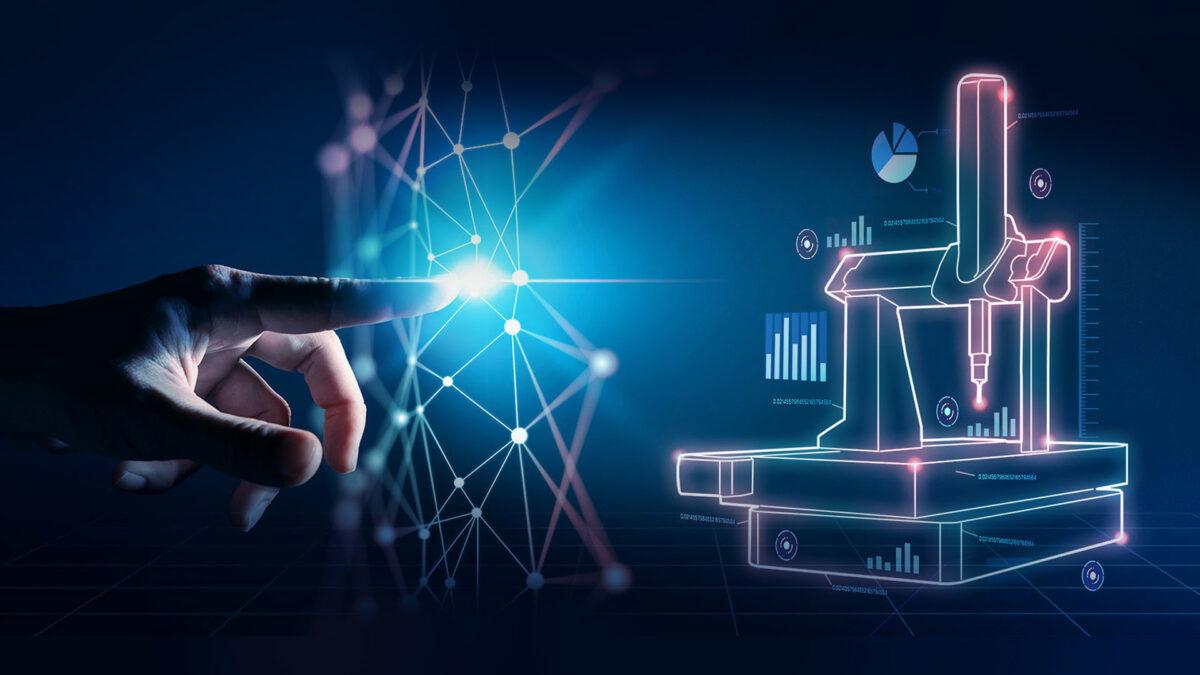
When your CNC CMM fails, how should the business decide whether it is worth considering a retrofit or whether a new CMM machine should be purchased?
Firstly, what is a retrofit?
A retrofit generally refers to an upgrade by replacement of a CNC CMM’s electronic equipment, mainly its controller unit and associated components (also called counting device). Considering a software upgrade at the same time is not mandatory but is usually requested to get full benefits of your newly installed unit.
When a CMM measurement machine breaks down, there are usually two options available: to purchase a new CMM or recondition and upgrade the existing one, i.e. to consider retrofitting your existing CMM measurement machine.
Purchasing a new CMM
A customer’s measurement needs may have changed. If tighter tolerance levels are required and they lie outside of the capability of the CMM, then a new CMM will need to be purchased as no amount of servicing will achieve the tolerance levels required by the operator.
Before investing in a new CMM machine, it is worth isolating the problem by working through the following three areas to determine the most cost-effective path for the business.
Retrofitting a CMM is a cost-efficient solution. Replacing parts provides a quick and easy solution to a fully functioning CMM measurement machine as it:
- Enhances performance,
- Extends the life of a CMM,
- Provides reliable and accurate measurements,
- Becomes easy to use,
- Ensures cost-effectiveness.
I. Software
Legacy software may have limitations. The opportunity to retrofit and upgrade to new software should allow the operator to:
- Get the best available features on the market,
- It should be easy to use and program,
- Be in a universal programming format,
- Work across all brands of CMM (not tied to one specific brand),
- Allow the operator to work efficiently across machines,
- Take data in any format and be able to use it,
- Provide consistent results between devices,
- Efficiently manage large data sets,
- Show errors in measurements and show how errors can be corrected,
- Provide clear informative reports that can be pushed to other departments in the production process,
- Adapt to changing needs of the organization and its measurement requirements.
New software should not only replace old software on a CMM machine but also upgrade it; providing a new lease of life for the CMM and making the machine ready for future by being faster and more efficient, at small percentage of the cost of a new machine.
II. Hardware
It is useful to check and test the condition of mechanical components such as the controller, keyboard motor, scales and reader head, air bearing and air feeding systems. If a problem can be located within these parts, they can easily be replaced with a new part at a fraction of the cost, and a fully functioning 3D measurement machine is available.
Regular checks should also be carried out on electrical components as parts can become obsolete. Usually, manufacturers and suppliers discontinue after a certain period (circa 10-12 years) and therefore needs to be checked periodically.
III. Service
A CMM measuring machine may be providing inaccurate measurements. This does not necessarily mean the machine has broken down, it could need a service, or a calibration. A CMM machine needs to be calibrated regularly (usually annually) to ensure the 3D measurements are carried out accurately.
It can help correct deviations in tolerance levels. However, if the organization needs to measure to tighter tolerance levels and they fall outside of the CMM machine’s capability, then a new CMM needs to be purchased.
There are three parts to the calibration:
1 – Mechanical adjustments
This is when a mechanical adjustment is made manually to the CMM measuring machine and is also an opportunity to check the important mechanical components and plan their replacement if necessary.
It is worth noting, a calibration is more than checking the 3D measurement machine.
2 – CMM tuning
Tuning is a fine balancing act between the speed and acceleration which is imperative when taking measurements. The machine must approach the part being measured at the correct speed. Speed refers to how fast a probe reaches a part and acceleration refers to how fast the process is ramped up, i.e., the time taken to arrive at the nominal speed.
It’s also very important to fine-tune the servomechanism for the purposes of obtaining better repeatability. An incorrect adjustment of the servomechanism can cause oscillation, which can disturb the probing system.
3 – Software compensation
This is an added layer in addition to the mechanical adjustment. It is a mathematical compensation made by the software, making necessary corrections to obtain better accuracy.
Regular accuracy tests also help throw up any deviations in measurements and can help pinpoint what is wrong with the CMM. This is when the machine’s present measurements are compared against the original measurements of the machine. Deviations in this comparison indicates that something needs to be fixed.
It is worth noting that variations in results post-calibration do not mean the machine is broken, it could be due to the fact that the machine has not been calibrated correctly. At this point it is worth enlisting the services of experts that can correctly identify where the problem lies.
What are the benefits of a CMM retrofit?
There are quite a few benefits to be gained from a CMM retrofit:
- It enhances performance,
- It extends the life of a CMM,
- It provides reliable and accurate measurements,
- It is easy to use,
- It is a scalable machine,
- It is cost effective.
In conclusion, with a retrofit you are not only repairing, but also upgrading the CMM machine, effectively spending lesser to get a better machine.

